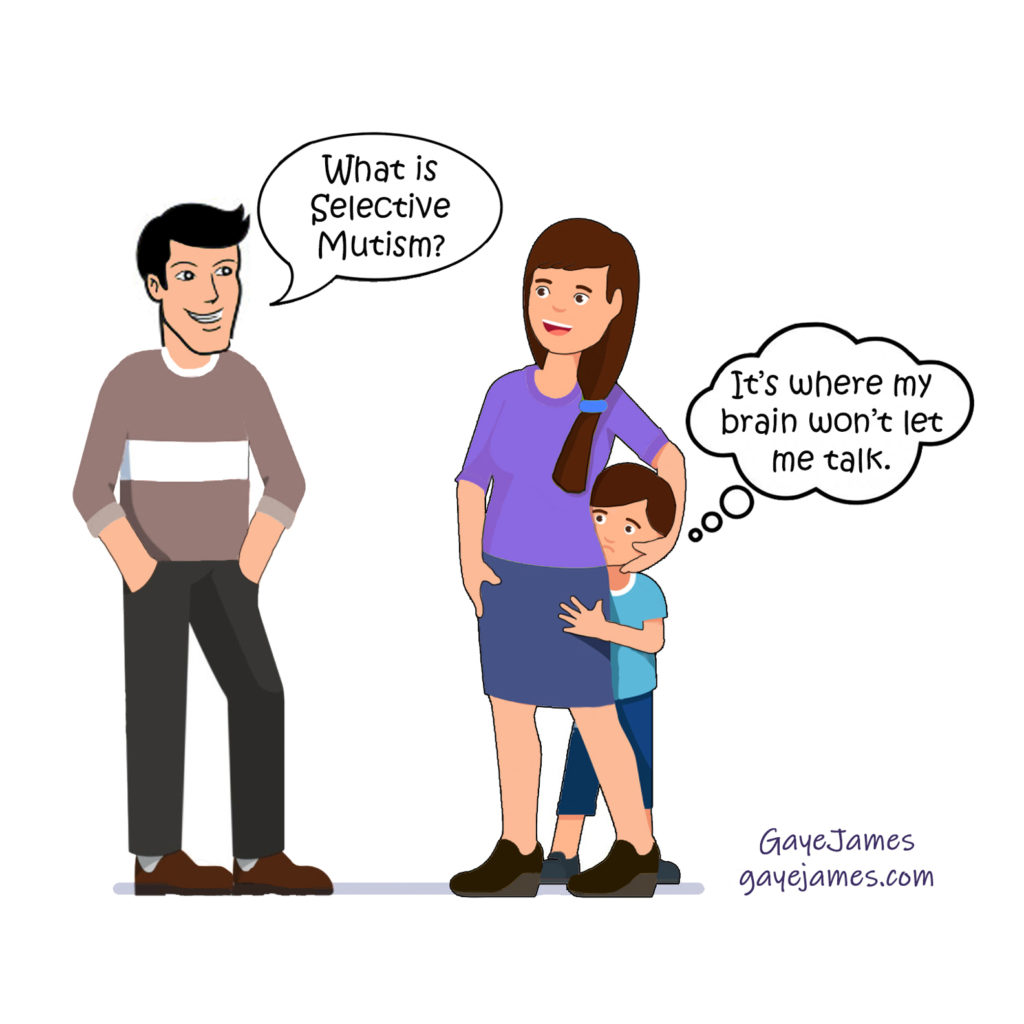Click to see cartoon depicting Selective Mutism.

The crippling fear controls them, not allowing their voice to surface.
What can you do about your child’s selective mutism?
- Tell all your friends and family about Selective Mutism
- Ask your friends/family to not bring the silence to attention (treat your child like everyone else)
- Support your child with encouraging words (“I’m here for you”, “I believe in you”)
- Don’t focus on what your child cannot do (don’t say, “why can’t you talk?”, “what’s wrong with you?”)
- Be there for your child, even when they’re silent
There are many other ideas for helping your child learn to overcome the disorder, which I will tackle in upcoming posts, but for now, just focus on providing love and support to them. They need to know you are there, no matter what. Creating a solid foundation for communication is essential. Sure, they probably won’t talk to you right now about what’s going on in their head. Heck, they may not even know or understand what’s going on inside. But offering to be there for them when they are ready to talk is the number one step in tackling this anxiety. They can learn to take charge of their life, but they need your support. The fact that you’re reading this means you want to be that support. You’ve already started on the path to recovery with this simple step. Kudos to you for caring!
Join the Silent Tribe and never be alone in your journey.
This is fantastic! A perfect definition of Selective Mutism.